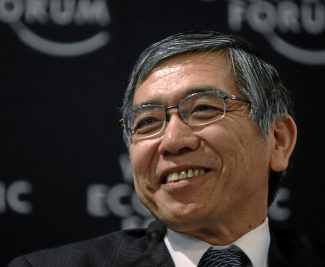The prevailing side in the competition over the green economy and global chip industry will become a dominant economic force over the coming decades. Few people doubt that.
The global chip market size is expected to reach $588.4 billion in 2024. Data from the Semiconductor Industry Association (SIA) reveals that global chip sales decreased 8.2% in 2023 to $526.8 billion and reached their highest level in 2022, at $574.1 billion, following the coronavirus pandemic slump. It’s now clear that sales in the sector are growing in an overall stable and dynamic trend.
This growth stability in the chips sector is related not only to market size, but also sectorial revenue volume generation, which more or less is autonomous of the fluctuating growth percentage of the revenue over the sales.
The development potential of the chips sector is comparable with that of the green economy, though it still lags far behind. In 2020, the green economy size was $1.3 trillion, while semiconductors reached $440 billion. It is estimated that by 2050 the green economy will soar up to $10.3 trillion mark, representing 5.2% of global GDP. By way of comparison, revenues from chips have doubled from 0.25% to 0.50% of the global GDP over the past 30 years.
The above data shows that the West faces another crucial battlefield with China apart from the green economy: the semiconductor sector. And while there can be no question as to the importance of the fight to define and dominate the green economy, as other analyses outline, this article will outline the key bottlenecks in the West’s chips industry, along with what can be done to overcome them.
The West’s Semiconductor Market Position
The CHIPS and Science Act is a US federal statute authorizing roughly $280 billion in new funding to boost domestic research and manufacturing of semiconductors in the United States, for which it appropriates $52.7 billion. The act includes $39 billion in subsidies for chip manufacturing on US soil, along with 25% investment tax credits for costs of manufacturing equipment, and $13 billion for semiconductor research and workforce training, with the dual aim of strengthening American supply chain resilience and countering China.
The CHIPS Act’s $52.7 billion investment in domestic semiconductor manufacturing aims to fulfill three main objectives: 1) reduce the likelihood that shocks abroad might disrupt the domestic supply of chips, 2) boost US international economic competitiveness and create domestic jobs, as well as 3) protect semiconductors from being sabotaged in the manufacturing process.
All of these objectives are understandable from the Western perspective, though the CHIPS Act is understandably not admired by competitors in the EU, South Korea, or Japan. Yet the CHIPS Act cannot be viewed as a comprehensive solution to the problems surrounding the US supply of chips or US competitiveness overall.
The reason why this is the case is fully applicable to the EU as well, which has its own CHIPS Act enacted in 2023, targeted at mobilizing $47 billion for achieving the objectives of its US counterpart, thus helping Europe to make up ground in a sector where it continues to lag behind the United States and Asia. The EU CHIPS Act aims to double the bloc’s share of global chip output to 20% by 2030. While the EC had originally proposed funding only cutting-edge chip plants similar to the US CHIPS Act, EU governments and lawmakers have widened the scope to cover the whole value chain, including older (mature) chips and research, along with design facilities. However, the envisaged funds for this ambitious purpose are woefully insufficient and it is not at all plausible to expect the EU approach to go beyond some scattered investments in semiconductor production.
China Targets the Low End
On the other hand, China is seeking to dominate the market for less advanced chips (28nm and above), and the Western CHIPS Acts actually does not address this issue. The stated goal of the Western policy is chip supply chain independence for the United States and the EU. But China is expected to dominate 50% of the less advanced chip market by 2030 and, by this fact alone, the West will lose out on the supply chain control that it is aiming for.
While the CHIPS Acts are not bad initiatives — in fact, they are an excellent start — they are insufficient if the goal is to control Western chip manufacturing. This is because the West is funding companies that are investing heavily in profitable chips; however, its vulnerability concerning lower-tech, yet equally critical chips, is set to persist. These chips are fundamental components in critical everyday objects, including medical instruments, cars, planes, and most importantly, military hardware. Roughly 70% of the produced chips in the world are low-tech or mature ones. Only about 30% belong in the advanced chips category.
Here China is embarking on the same economic strategy it has repeatedly employed in other sectors, but this time with greater ferocity and more of a pronounced geopolitical calculation than usual; i.e., find a weak point in an industry, dominate the low-end, and then move up. Their foundries (SMIC) are manufacturing low-tech chips before aiming for more advanced nodes. The Chinese have explicitly stated that besides the all-important domestic self-sufficiency, having a strategic chokehold on the low-end chips provides an edge for them in economic warfare with the West.
But the semiconductor industry is as American as apple pie.
The U.S. maintains a dominant position in a few critical parts of the sector, and this is not going to change anytime soon. In terms of market share, the United States designs most of the world’s chips, about 70% of them. It controls the major tools and associated technologies, both physical tools (except the Dutch ASML) and digital tools, like Cadence and Synopsys. The U.S. is followed by South Korea and Japan as influential players, and the European Union remains conspicuously absent.
It is only in chip manufacturing where the US position has slid. There are domestic manufacturing fabs still in the mix, but the United States has primarily outsourced to overseas foundries like TSMC and UMC, both of which are Taiwanese. Most US-based foundries only produce chips for the company that owns them. Fabrication capability is a critical part of having an independent semiconductor supply chain, which, especially with Taiwan’s increasingly precarious geopolitical position, the United States and the West now desperately need.
The primary reason for outsourcing chip fabrication is straightforward: it is immensely capital-intensive and often less profitable. To produce advanced chips one needs high-end machinery, but to produce mature chips it is only necessary to exploit depreciated machines.
For companies like Intel and GlobalFoundries, mature chips generally do not fit into the margin structures. Most US companies sell their old facilities and old equipment, sometimes to Chinese buyers.
It is abundantly clear why this is the case: the economics of operating a modern fab are staggering. A reasonably sized fab might cost around $5 billion in capital expenditures, which requires generating $50-$70 in revenue per second to achieve a 20% return at the outset. Even after it depreciates, it still has to generate $30-$40.
SMIC and China’s Strategy
China’s semiconductor strategy is driven by two main goals, the primary one being domestic self-sufficiency, which views semiconductors as a critical national asset akin to strategic reserves of oil or food. The secondary goal is to establish a strategic leverage point in the global supply chain through mastery of mature chips, effectively creating a potential chokepoint that enhances China’s geopolitical leverage.
The Chinese simply do not face the same economic constraints that Western enterprises do in achieving these goals:
- State capital and cheap loans make the problem of capital outlays less onerous. There is an expectation that the loans will be paid back, but the terms are negotiable.
- Profits are not as important, given that the stakeholders are the state, which has a different set of priorities.
- R&D is done for them. They are buying mostly used or old equipment (from the West).
China’s Semiconductor Manufacturing International Company (SMIC) has the goal of moving into more advanced chips, but right now it is struggling to find a balance between using the older Western equipment that it can still access and shifting to a made-in-China ecosystem, which is mostly just derivative of the very same Western equipment. Nevertheless, SMIC has made some advances with enlarged volumes of high-tech chip production, although in doing so it employs older equipment in a production process that doesn’t project to be terribly lucrative moving forward.
In the meantime, SMIC is indeed swamping the mature chips market. While the margins for individual mature chips might be low, it still sustains the business and achieves a strategic objective of creating a chokepoint.
This “swamping” is deliberate, and it is referred to directly in Xi Jinping’s speech “Major Issues Concerning China’s Strategies for Mid-to-Long-Term Economic and Social Development.” The strategy should be taken seriously, if anything because within the US military supply chain an estimated 20-40% of chips are coming from China. Add to it the Taiwanese chips share and it is not difficult to discern the peril to US national security in the event of a Chinese invasion of Taiwan.
Beating China at Its Own Game?
Bearing the above in mind, it becomes necessary for the West:
- To earmark more money toward mature chips (also requiring a reduction of public debt and national budget deficits as well as setting up schemes for insuring state guarantee commitments with private insurers);
- To implement a more comprehensive tariff regime on all Chinese chips;
- Besides sanctioning equipment for advanced chips, the West should go further and restrict software tools like Cadence and Synopsys;
- To restructure key supply chains by investing in Southeast Asian and Eastern European countries, establishing foundries for the production of mature chips and then substituting Chinese imports with them.
Will a successful implementation of the four above measures remove the threat of China’s control over certain global supply chains? No. It will only buy time for the West. If everything goes well with implementation, it will increase the production capacity of the Western economies in the chips sector. But then to whom will these newly added mature chips be sold given that these economies are overwhelmingly de-industrialized? Perhaps again to China, where local industry still grows steadily. Currently, this is the case with the US corporation Applied Materials, which makes about 45% of its revenue from China and will probably lose it like other similar big producers in the West if the latter invests more into mature chips.
Thus, taken together this means that by enacting only specialized laws (CHIPS Acts) and trying to solve the problem with the global supply chains control solely through policies within the chips production sector, the West will not reap much good. Instead, it needs an overall re-industrialization to stimulate domestic demand and then to find a solution to its problems in this sector and with its global competitiveness. Scaling up the re-industrialization (including green industry) in the meantime requires huge subsidies. Accepting this reality, the West will have to forget many light shadows of market fundamentalism, remember what austerity could sometimes be, and boldly liken itself to China to beat it on its own pitch (subsidies) by leveraging the West’s better economic productivity.




